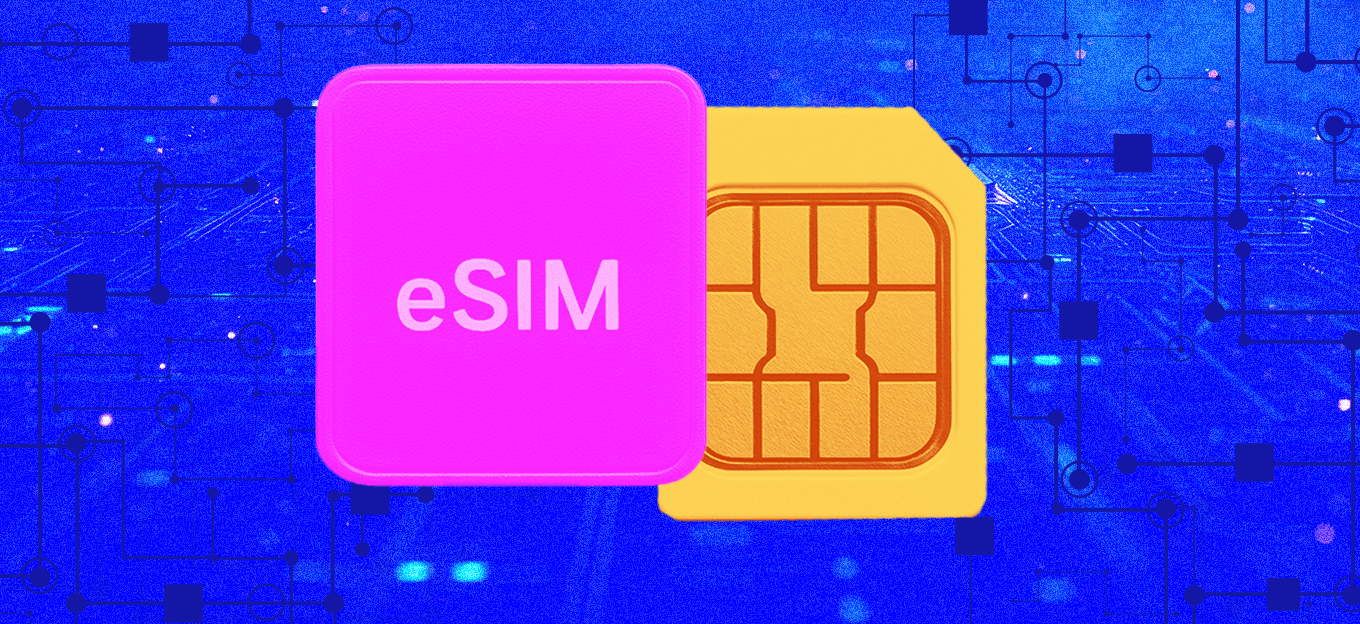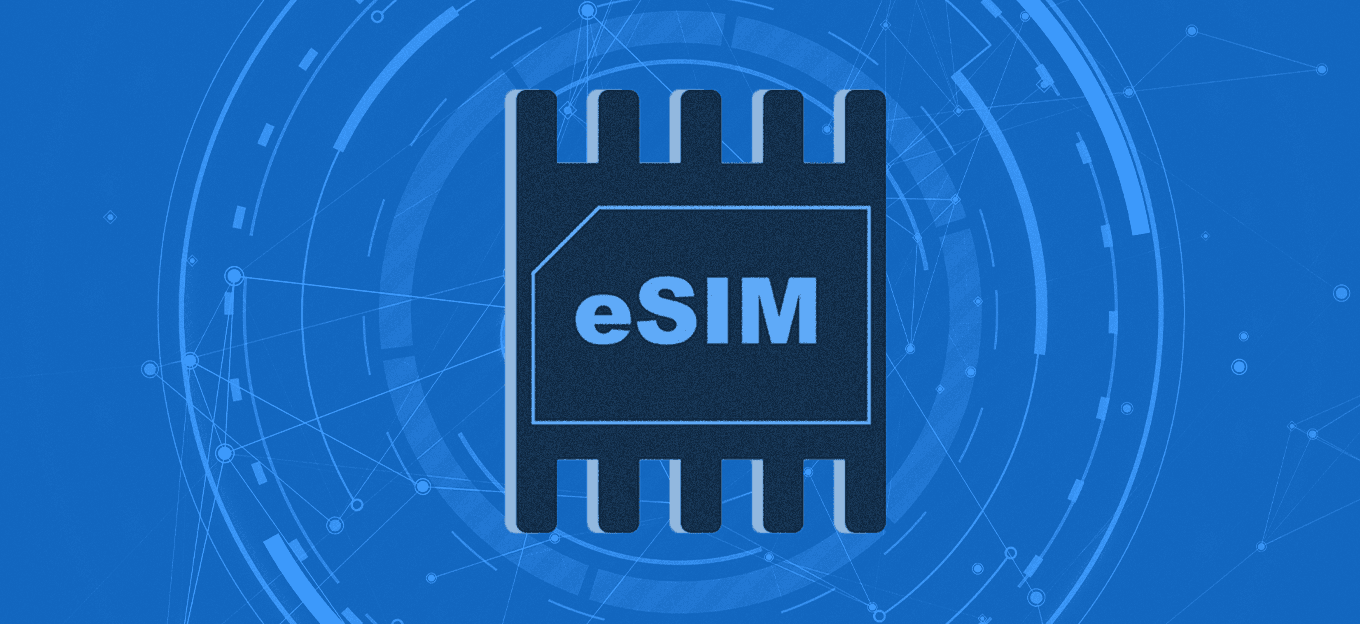Simplifying IoT Connectivity with eSIM: Optimizing Management and Reducing Costs
Simplifying IoT Connectivity with eSIM: Optimizing Management and Reducing Costs
- Last Updated: July 3, 2025
Aeris
- Last Updated: July 3, 2025



If you’re leading a remote IoT program—whether at an OEM, a solution provider or a global enterprise—you know that traditional Subscriber Identity Module (SIM) management is no longer sustainable. Regional SIM SKUs, manual provisioning, roaming fees and regulatory barriers have all become critical roadblocks to growth.
This challenge is only intensifying as IoT adoption accelerates. According to IoT Analytics, cellular IoT connections are projected to more than double from 3.9 billion in 2023 to 8 billion by 2030. Such growth demands a scalable, dynamic connectivity model, which is not possible with physical SIM constraints.
The modern solution is IoT eSIM, or embedded SIM, technology. When paired with lifecycle orchestration and platform control, eSIM technology enables a far more scalable, flexible and cost-efficient IoT operation.
This blog explores how to rethink your IoT connectivity strategy with eSIM capabilities, the benefits and challenges you’ll encounter and offers a path to more streamlined, profitable deployments worldwide.
What is eSIM for IoT?
At a high level, eSIM for IoT devices means replacing the physical SIM card with a programmable, embedded chip that allows remote profile management. Instead of shipping region-specific SIMs or swapping cards manually, you can remotely configure devices post-deployment, such as selecting carriers, adjusting policies, and activating services over the air.
For global IoT initiatives, this means:
- No more separate production lines or SKUs by geography
- No need for SIM physical logistics or technician interventions
- Flexibility to adapt network partners dynamically
Simply put, eSIM technology decouples the device from the carrier, giving you operational leverage instead of locking you into rigid contracts and infrastructure.
Key Components of eSIM Management
Effectively managing eSIM for IoT requires more than the ability to provision a profile remotely. To operate at an enterprise scale, you need an orchestrated ecosystem that spans SIM lifecycle management, dynamic policy enforcement, carrier profile control and platform integration. Each component plays a distinct role in helping you reduce operational overhead, maintain compliance and adapt to the unpredictable nature of global IoT deployments. Let’s break down the critical building blocks that should be part of any high-performance eSIM management strategy.
Remote SIM Provisioning — Remote SIM provisioning fundamentally transforms how you manufacture, distribute and activate IoT devices. Instead of provisioning at the factory, you can activate the device at the moment of field installation, using the optimal network for that environment. Provisioning at the point of deployment eliminates the traditional “guesswork” of regional SIM distribution and minimizes the risk of stranded inventory due to changes in deployment plans.
For example, no intervention is needed if a fleet of asset trackers originally destined for Spain is redirected to Germany. The same hardware, with a single SKU eSIM, can pull the appropriate carrier profile when activated on-site.
Additional benefits include:
- Faster time-to-market and customer onboarding
- Lower inventory carrying costs
- Greater responsiveness to market or regulatory changes
eSIM Lifecycle Management — An eSIM lifecycle orchestration platform provides the operational controls to manage every SIM across its life stages. Key lifecycle states you can control include:
- Manufactured but inactive: Securely staged in inventory without triggering billing
- Activated and in service: Consuming commercial data plans
- Suspended: Temporarily paused to save costs
- Retired or deactivated: Archived for accounting and asset tracking
Without these controls, you risk overpaying for inactive devices, losing visibility on aging assets and complicating financial reconciliation. Proper lifecycle management aligns your network spending with your business activity, optimizing cash flow and operational metrics.
Carrier Profile Management — Using carrier profile management, you can remotely download, activate and swap between mobile operator profiles without device access. The ability to manage profiles over the air is critical for addressing real-world operational dynamics, such as:
- Regulatory shifts: Devices in certain countries must use domestic carriers due to roaming restrictions.
- Performance degradation: Seamless failover if a network’s quality of service (QoS) drops below the service level agreement (SLA).
- Disaster recovery: Automatically shift connectivity if an operator’s core network suffers an outage.
In short, carrier profile management capability reduces operational risk and enables business continuity across your IoT deployments.
eSIM Policy Management — A well-designed eSIM management platform empowers you to enforce automated connectivity policies without manual intervention. Example policies include:
- Data usage thresholds: Switch profiles if usage caps are exceeded
- Regional optimization: Prioritize lower-cost networks based on device location
- Anomaly detection: Trigger profile changes if abnormal traffic patterns are detected (possible device malfunction.
Dynamic policy enforcement turns your IoT fleet into a self-optimizing network, reducing costs and downtime at scale.
The Role of eSIM Orchestration in IoT
For all its benefits, eSIM technology introduces management complexity. Manually activating profiles, switching networks, or enforcing usage policies across a distributed device fleet quickly becomes unsustainable.
To operationalize eSIM technology at scale, you need more than just remote provisioning; you need an intelligent control layer that automates decision-making, integrates with your existing systems and responds dynamically to changing network, policy and usage conditions. That’s where eSIM orchestration comes in.
Core eSIM orchestration capabilities include:
Single pane of glass management — An effective eSIM management platform consolidates all connectivity operations into one view, so you no longer need to juggle different carrier portals or data systems. From a single interface, you can:
- Monitor device status and connectivity health in real time
- Track usage, billing and SIM lifecycle stages
Apply policies across fleets instead of configuring each device manually
This single-pane-of-glass approach streamlines troubleshooting, accelerates decision-making, and reduces operational overhead and response time when issues arise.
Policy-based automation — Managing connectivity manually isn’t just slow; it increases risk. Policy-based automation allows your fleet to self-correct and self-optimize. Examples include:
- Auto-deactivating idle SIMs after a set period
- Switching to lower-cost carriers based on data thresholds
- Triggering profile changes based on region, latency, or SLA performance
These policies ensure your fleet is always aligned with your business goals without requiring constant human oversight.
Multinetwork support — Multinetwork capability is critical for global IoT operations. A well-orchestrated eSIM for IoT deployment should support dynamic network access across regions without locking you into a single carrier or incurring high roaming costs. In practice, this means enabling you to:
- Choose from multiple operators based on performance or pricing
- Ensure compliance with local telecom regulations (e.g., prohibitions on permanent roaming)
- Geography
Multinetwork support improves resiliency and creates leverage since you no longer depend on one carrier’s infrastructure or pricing.
Benefits of eSIM for IoT
Embedded SIM capabilities are more than a convenience; they’re a catalyst for transformation. When properly orchestrated, they enable leaner operations, faster deployment and greater adaptability across the entire device lifecycle. Key benefits include:
Future-proof connected devices — Connectivity infrastructure evolves constantly. Carriers decommission networks, governments update regulations and user demands shift. With eSIM technology, your devices aren’t locked into yesterday’s assumptions. They can adjust their connectivity profiles post-deployment, ensuring compliance, performance and longevity.
No SIM switching costs — In legacy models, replacing or updating SIMs means dispatching technicians, coordinating field visits and risking device downtime. With eSIM for IoT, you can update or reassign network access remotely, saving money, reducing risk and improving your ability to respond to real-time changes in the field.
Streamlined SIM logistics management — Shipping different SKUs for each region adds complexity and cost. Managing inventory tied to specific carrier SIMs requires precise forecasting, leaving you vulnerable to delays, misallocations, or obsolescence. With a single SKU strategy enabled by eSIM, you simplify your supply chain. Devices can be configured on demand for any region without physical modification.
Greater return on IoT investments — By minimizing waste—whether in time, cost, or hardware—eSIM technology improves the ROI of your IoT initiative, so you gain:
- Faster deployment cycles
- More efficient use of resources
- Better insights to inform long-term strategy
In short, you do more with less and scale without increasing complexity.
Challenges of eSIM Management
While the benefits of eSIM for IoT are compelling, realizing them at scale isn’t automatic. Like any enterprise transformation, success hinges on how well the platform integrates into your broader ecosystem—technically, operationally and strategically. Here are three key areas where organizations often encounter challenges:
Integration with Existing Systems — Your eSIM solution must work seamlessly with the systems already powering your IoT operations—from customer relationship management (CRM) and enterprise resource planning (ERP) platforms to operational support systems and billing support systems (OSS/BSS) and device management tools.
Challenges can include:
- Data model mismatches: Your internal systems may track devices differently than your eSIM platform, requiring normalization before integration.
- API incompatibility or limitations: Not all platforms offer RESTful, well-documented APIs or real-time webhooks, making automation difficult.
- Process misalignment: Lifecycle workflows for activation, billing and policy enforcement must be aligned across systems, or you risk operational gaps.
To avoid these issues, enterprise-grade solutions should offer modular integration, such as open APIs and prebuilt connectors, that reduce custom development.
Security and Privacy Concerns — With eSIMs remotely managed over the air, new threat vectors emerge. If poorly secured, an attacker could potentially wreak havoc, such as hijacking SIMs and redirecting traffic, intercepting profile provisioning events, or exfiltrating sensitive data through misconfigured routing.
Key security considerations include:
- Strong authentication for all provisioning commands, such as multifactor or certificate-based access
- End-to-end encryption for OTA transactions
- Audit logging for every action taken on SIMs, profiles or user accounts
- Zero-trust posture, especially for external integrations
In regulated industries, such as healthcare, automotive and financial services, these risks multiply and compliance becomes a shared responsibility between the IoT owner and the platform provider.
Regulatory Compliance — Telecom and data privacy regulations vary widely by region, and many directly impact how eSIM management platforms must operate. Examples include:
- Permanent roaming restrictions: Some countries require local carrier provisioning for long-term connectivity.
- Data localization laws: In some regions, sensitive device data must be stored—and sometimes processed—locally.
- Cross-border provisioning restrictions: eSIM profiles may need to be downloaded only within the target country to meet lawful intercept or surveillance requirements.
Failure to comply can result in service suspension, fines or even device bans. Your eSIM strategy must account for these variables upfront, with dynamic provisioning options, regional carrier access and policy-based compliance controls.
The Future of eSIM Technology and Its Role in Revolutionizing IoT Connectivity
As the connected device market matures, the demands on infrastructure, operations and cost management are becoming more onerous—and less forgiving.
Recent research from IoT Analytics indicates that the number of connected IoT devices is projected to reach 40 billion by 2030, up from 18.8 billion in 2024. This exponential growth underscores the need for scalable, dynamic connectivity models. The next generation of IoT success stories will be powered not only by scale but by adaptability, automation and intelligence.
eSIM technology is at the core of that shift. It’s not just replacing physical SIMs; it’s tapping into a new class of capabilities that make global IoT more sustainable, compliant and efficient. For organizations that want to lead in logistics, mobility, smart cities, energy, healthcare and beyond, eSIM will be the default, not the exception.
IoT Ecosystem Expansion
In the past, expanding into a new region or vertical meant negotiating with a local MNO, ordering physical SIMs, navigating regulatory differences and adapting your systems for new workflows. With eSIM for IoT, that expansion is:
Integration with Existing Systems — Your eSIM solution must work seamlessly with the systems already powering your IoT operations—from customer relationship management (CRM) and enterprise resource planning (ERP) platforms to operational support systems and billing support systems (OSS/BSS) and device management tools.
Challenges can include:
- Faster because you don’t need new hardware or SIMs
- Simpler thanks to centralized orchestration and automation
- Smarter with AI insights guiding connectivity decisions at scale
It also opens the door to “as-a-service” business models wherein devices can be shipped dormant and activated only when a service begins. Bundled connectivity models become easier to offer, with zero-touch provisioning and billing control integrated into your stack.
eSIM is a foundational enabler for scaling the infrastructure, business models and revenue opportunities that IoT delivers.
The Most Comprehensive IoT Newsletter for Enterprises
Showcasing the highest-quality content, resources, news, and insights from the world of the Internet of Things. Subscribe to remain informed and up-to-date.
New Podcast Episode

Moving Past the Pilot Phase in IoT and AI
Related Articles


